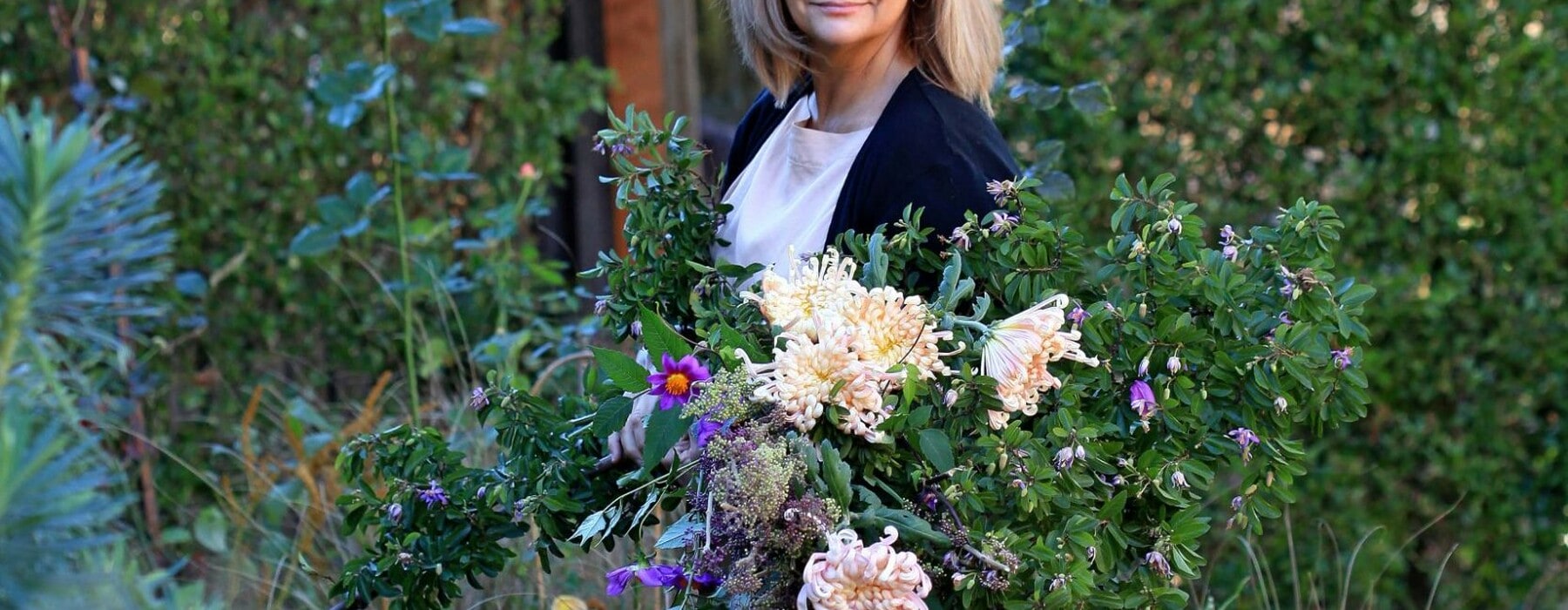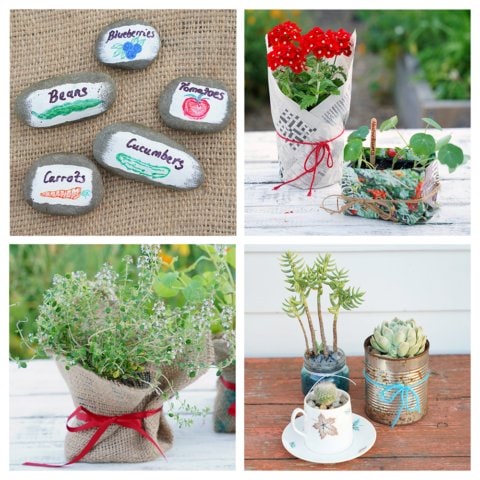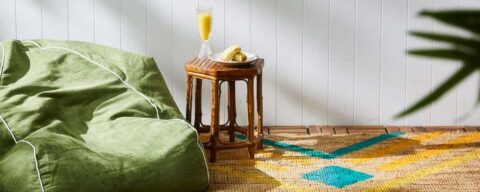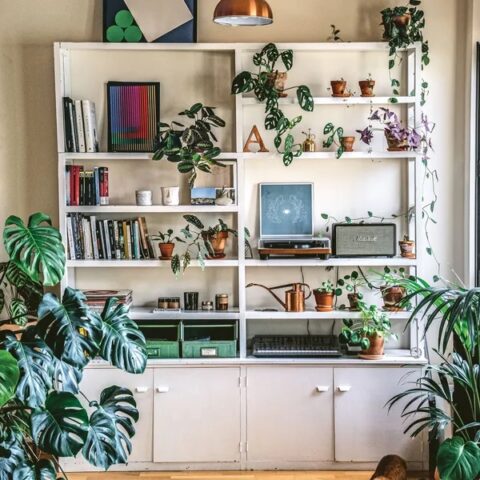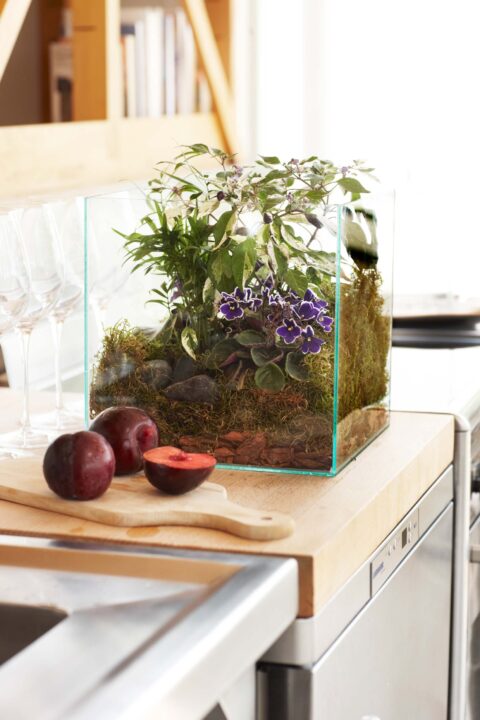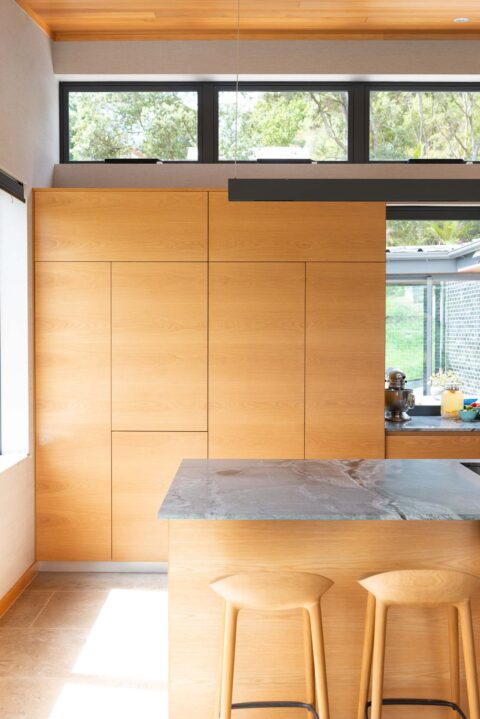An Auckland botanical artist has created a series of photographs that explores our obsession with plants.
he influence of a grandmother can never be underestimated, especially when it comes to passing on a love of gardening. There’s usually one or two lurking in the greenery behind every self-confessed plant nerd, and for Auckland gardener and botanical artist Felicity Jones, this is certainly the case. “I’m a mad keen gardener and have loved flowers all my life really, and my mother was the same and her mother was the same.”
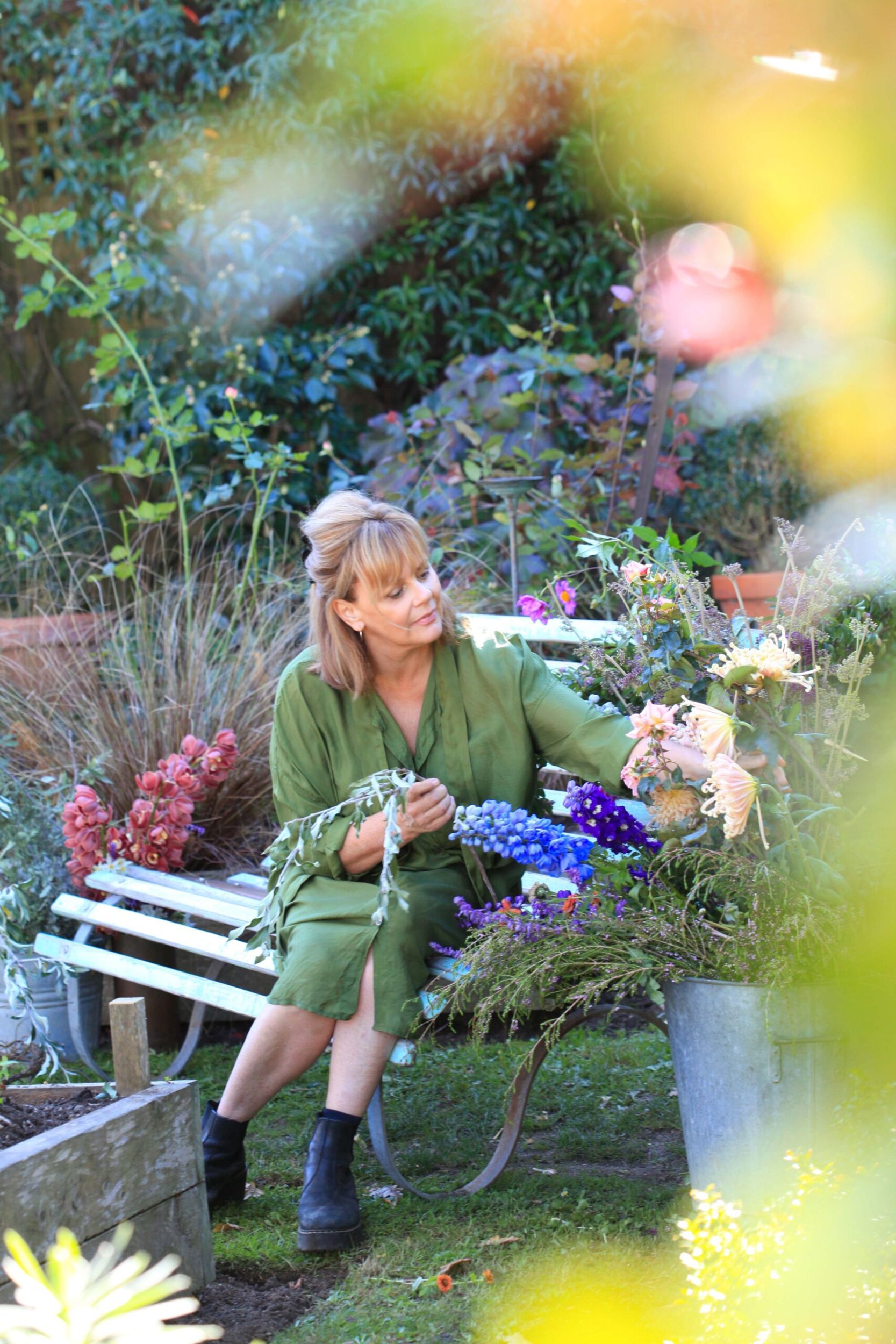
These green roots were the catalyst for starting a small-scale flower farm at her Grey Lynn home, where she’s been growing blooms for her bespoke floristry business, Green is the Thing, for five years. But it was thinking about her grandmother’s love of plants that recently sent Felicity down the garden path into an exploration of Aotearoa’s horticultural history. The result is Case Studies, an ongoing artistic collaboration with photographer Mark Smith.
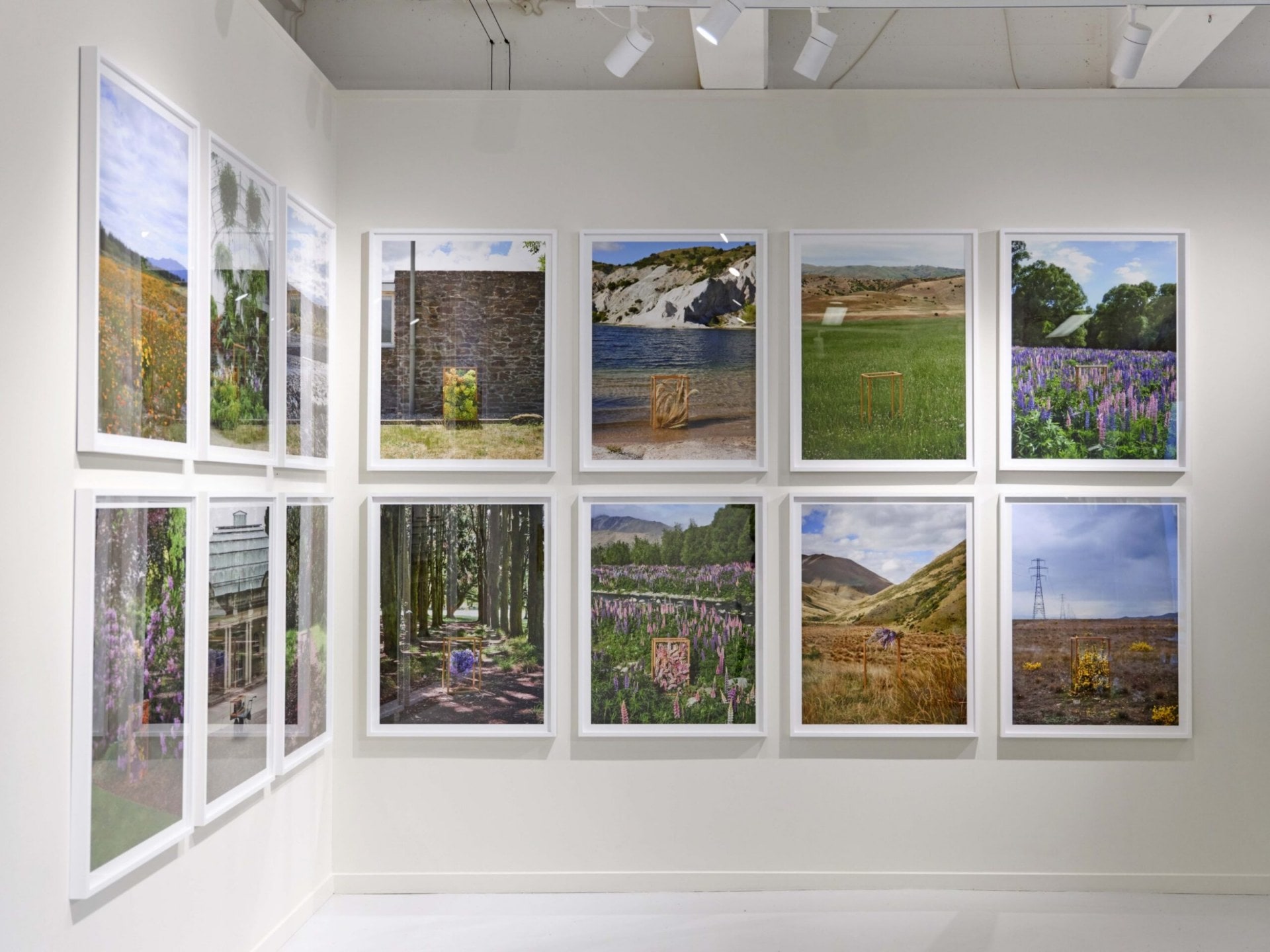
“I started thinking about European women settlers who came to New Zealand,” says Felicity. “I had this image of The Piano, the Jane Campion film, and I kept thinking about these really strong women in the middle of the damp bush trying to recreate a little bit of their homeland. Of course, they had to grow vegetables for food, but they grew flowers because they wanted to.”
Continuing along this line of thought, Felicity started thinking about the odysseys many exotic plant species made. “Obviously, people brought seeds with them, but I started wondering about plants like roses or rhododendrons that are often grown as cuttings rather than from seed. How did people transport them and keep them alive on long sea voyages?”

Enter the Wardian case, the world’s first terrarium, invented in the 1830s, which revolutionised plant transportation. It was an accidental invention of physician and amateur botanist Nathaniel Bagshaw Ward, who was housing a moth chrysalis in a sealed bottle when he noticed that plants had germinated in its base. After establishing that condensation inside the bottle was providing the necessary moisture to keep the plants alive, he wondered if plants could survive on the decks of ships on long sea voyages if housed in sealed cases. In 1833 his prediction proved correct when live specimens of ferns and grass from England arrived in Sydney after a six-month sea voyage.
The case was a botanical game changer, and when a blooming primrose arrived in Melbourne in 1855 in
a Wardian case, 3000 people went to see it, and a poem and painting were created in honour of the event.
Captivated by this history, Felicity (whom Mark good-naturedly describes as a “frustrated photographer”) decided in 2019 to make an artwork referencing the famous portable glasshouse. “I wanted to create an image of a Wardian case filled with blowsy English flowers in a New Zealand native setting.”
After a fruitless search for an original Wardian case – during which she learnt that only a few remain, in Australia and at Kew Gardens – she borrowed a glass display cabinet from clothing store Widdess, filled it with English-garden darlings such as roses, delphiniums and foxgloves, and enlisted Mark to photograph it in a native bush setting in West Auckland.
Other photographs of exotic plants followed, many of them beloved weeds that have colonised the natural landscape – blue mophead hydrangeas on a West Coast beach, purple heather on a pathway lined with toetoe, and golden-flowered gorse backed by large flax bushes. Then, to reference how plants were sent from the colonies to institutions like Kew Gardens, they displayed natives such as kōwhai and ferns in the case.
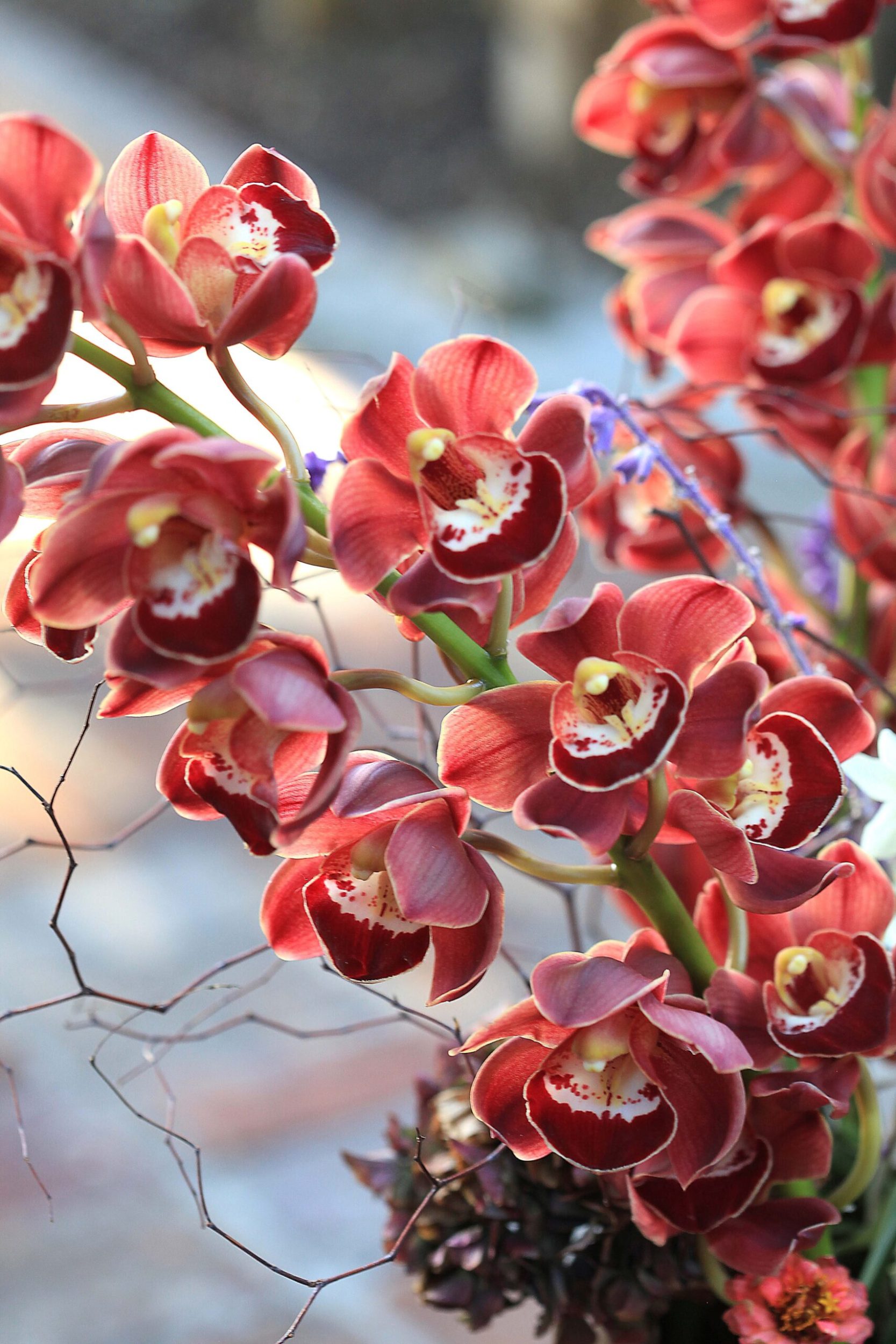
In 2020 Felicity had plans to transport herself to London (the conventional way) to exhibit Case Studies at the Garden Museum, but once Covid put a stop to that, she and Mark decided to shoot another series of images, Case Studies South, which focuses on culturally and environmentally controversial plants in Central Otago and the Mackenzie Country.
They rented a campervan, packed version two of their Wardian case (this one designed by Felicity’s husband, Chris Pitts, a product designer) and timed their trip to coincide with the flowering of the Russell lupins – divisive plants that are environmental weeds, outlawed by DOC, but that farmers love because they’re nutrient-rich food for stock. Legend says they owe their presence to lupin lover Connie Scott who in 1949 bought £100 worth of lupin seed, hid the bill from her farmer husband, and scattered them along Burkes Pass in South Canterbury.
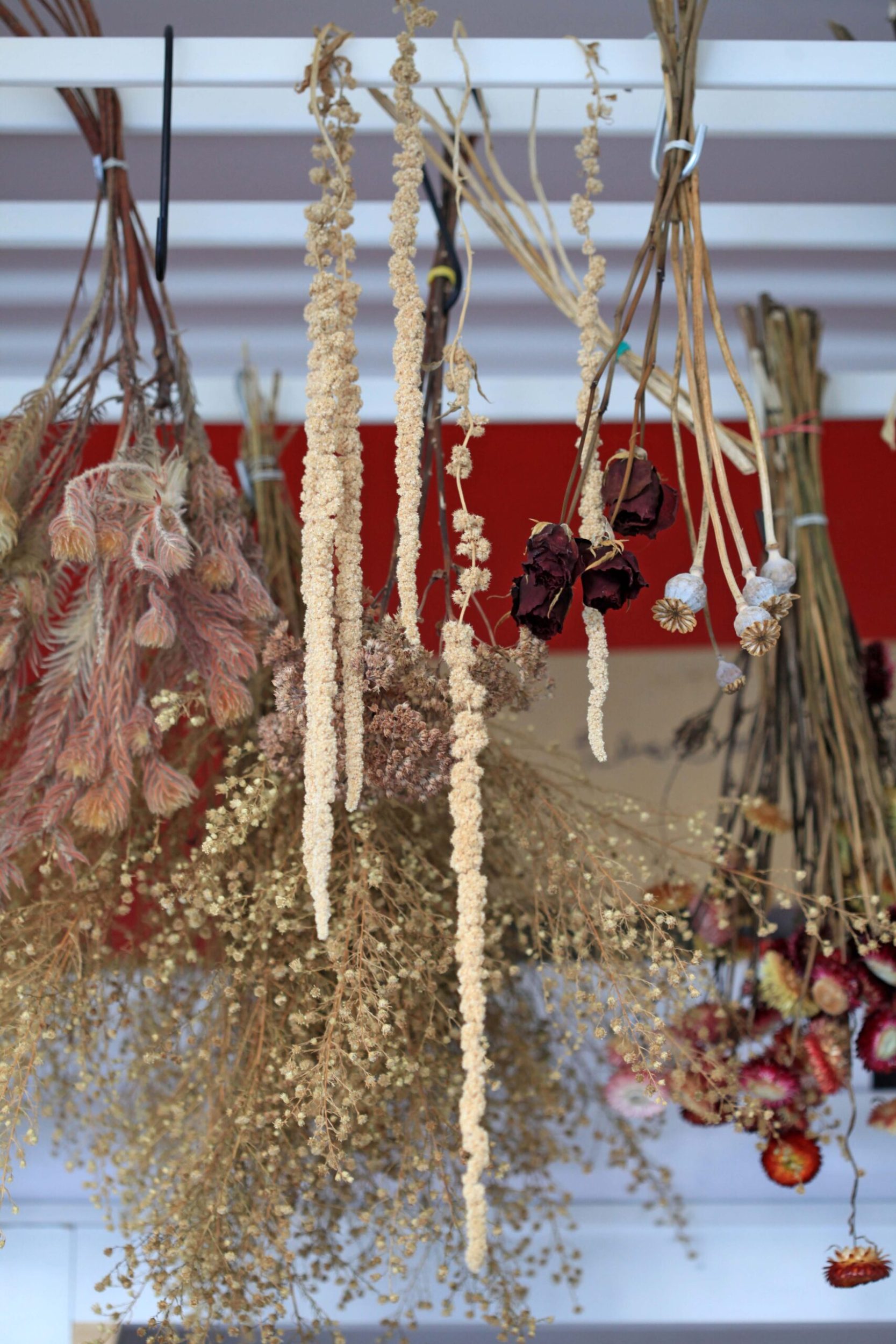
The pesky beauties are also tourist magnets, and Mark and Felicity had competition to secure the best shoot locations. “A couple was doing a photo shoot and the young woman, who was topless, kept wandering through our set-up!” says Felicity.
As well as photographing other notorious South Island weeds – briar roses, bright yellow broom, and California poppies – Mark and Felicity photographed tropical plants in the Christchurch Botanic Gardens, referencing the burglary of a variegated monstera there last year. “Those images tell a story about people’s obsessions with plants through history,” says Felicity. “We had tulip mania and orchids, and at the moment there’s the trend for tropical houseplants.”
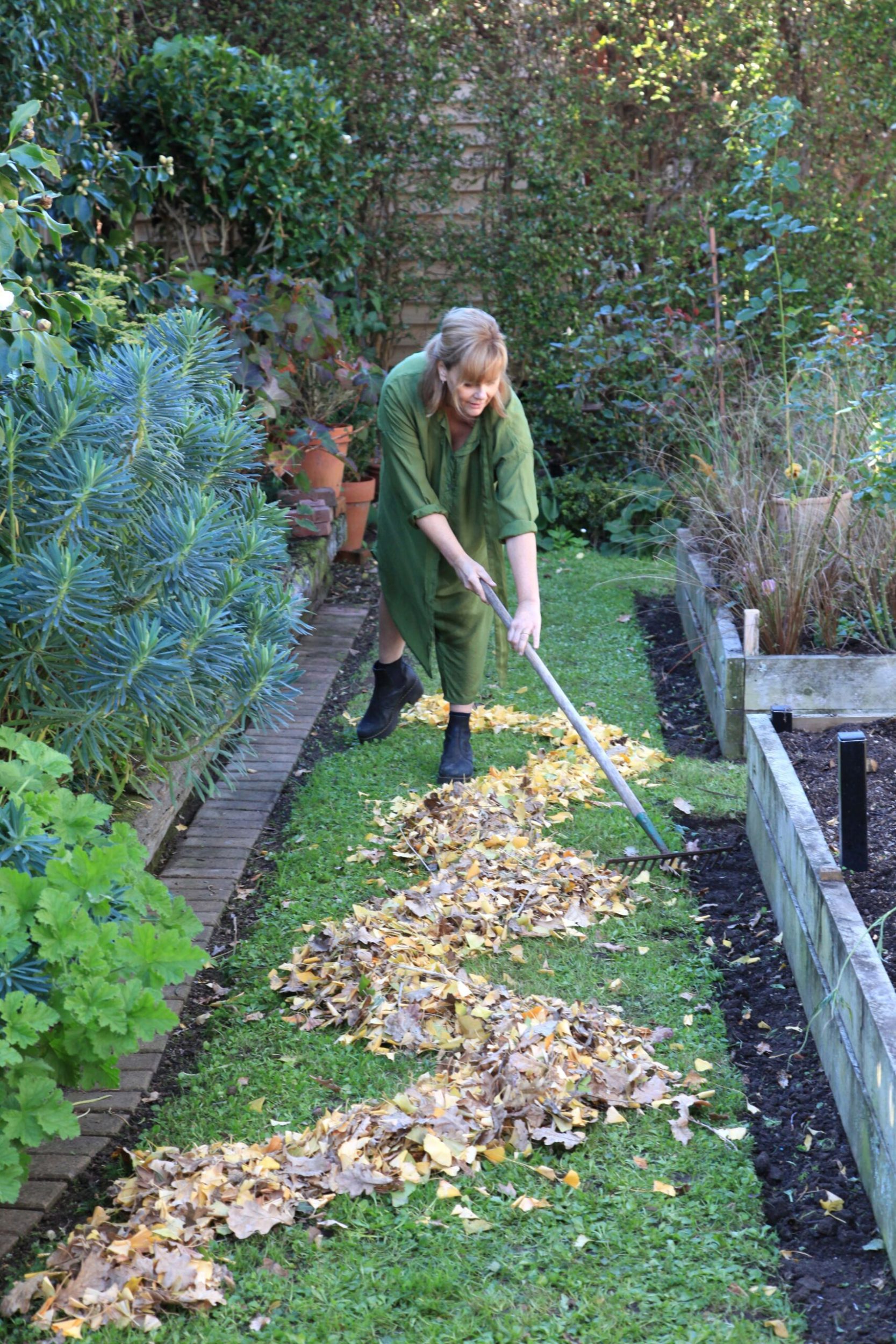
She’s keen to expand on this idea of obsession for a future series, as time permits. When she’s not teaching singing (“my day job”), she’s in her garden or working in her studio. Her explorations into botanical history recently led to TV work creating arrangements for the 1860s period drama The Luminaries. But most often she creates seasonal displays for weddings, funerals and other events. “I love wild, organic, loose-looking arrangements but everything I make is quite considered and its own little artwork.”
View Felicity’s work at felicityjones.co.nz, and Case Studies at marksmith.co.nz.

